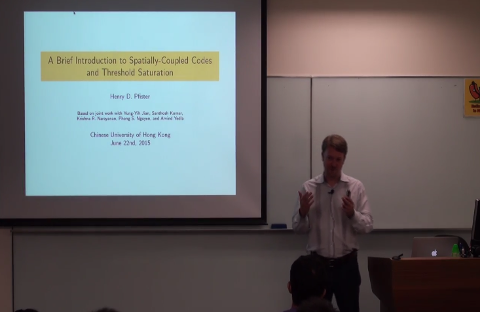
It is well-known that belief-propagation (BP) decoding of low-density parity-check (LDPC) codes is suboptimal and that the noise threshold of maximum-a-posteriori (MAP) decoding can be larger than that of BP decoding. In 2011, Kudekar et al. proved that regular LDPC ensembles can be spatially coupled (SC) so that the BP noise threshold saturates to the MAP noise threshold of the original ensemble. These SC ensembles are instances of LDPC convolutional (LDPCC) codes and the new proof explains an earlier observation by Lentmaier et al. that terminated LDPCC codes allow reliable communication at rates approaching capacity.
The goal of this talk is to provide a tutorial introduction to these recent advances in coding theory. A short review of LDPC codes and density evolution will be followed by an introduction to SC codes. Next, some standard communication problems will be used to highlight the benefits of SC codes. Finally, the phenomenon of threshold saturation will be discussed and an overview of its proof will be presented.
This talk is based on joint research with Yung-Yih Jian, Santhosh Kumar, Krishna R. Narayanan, Phong S. Nguyen, and Arvind Yedla.
Henry D. Pfister received a Ph.D. in electrical engineering in 2003 from the University of California, San Diego and he is currently an associate professor in the electrical and computer engineering department of Duke University. Prior to that, he was a professor at Texas A&M University (2006-2014), a post-doctoral fellow at the École Polytechnique Fédérale de Lausanne (2005-2006), and a senior engineer at Qualcomm Corporate R&D in San Diego (2003-2004).
He received the NSF Career Award in 2008, the Texas A&M ECE Department Outstanding Professor Award in 2010, and was a coauthor of the 2007 IEEE COMSOC best paper in Signal Processing and Coding for Data Storage. He is currently an associate editor in coding theory for the IEEE Transactions on Information Theory (2013-2016) and a Distinguished Lecturer of the IEEE Information Theory Society (2015-2016).
His current research interests include information theory, communications, probabilistic graphical models, and machine learning.
